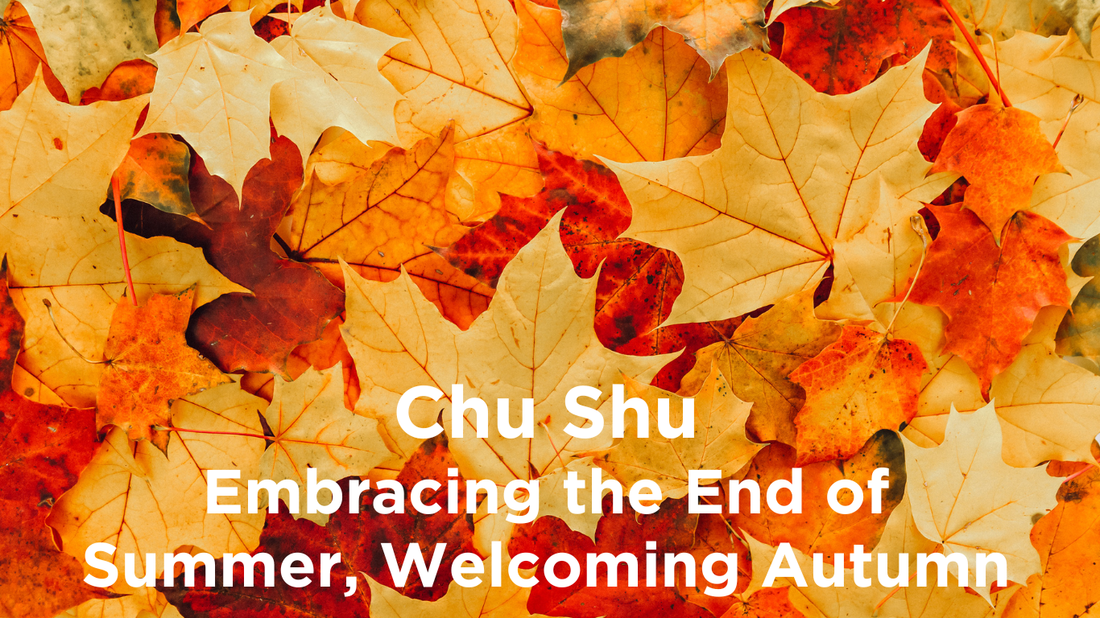
Chu Shu: Embracing the End of Summer, Welcoming Autumn
Gretchen SynclaireShare
As the 14th solar term, Chu Shu (处暑, “End of Heat”) arrives typically between August 23 and September 7, it signals the slow retreat of summer’s intense heat and a gentle shift toward cooler, drier autumn days. In traditional Chinese medicine (TCM), this is a pivotal moment to rebalance the body, shedding lingering summer heat, nourishing yin, and preparing for the dryness and cooler air of autumn.
Chu Shu in TCM: A Seasonal Reset
Lingering summer heat (shu) can still smolder within the body even as temperatures drop. Without clearing this excess, it can lead to symptoms such as:
-
Dry throat or cough
-
Low-grade fever or irritability
-
Thick or sticky mouth sensation
-
Poor appetite, bloating, or constipation
-
Restless sleep
At the same time, autumn’s dryness begins to influence the lungs and skin, leaving fluids vulnerable. The goal during Chu Shu is twofold: gently clear residual heat while supporting moisture and digestion to prevent imbalances in the cooler season ahead.
Diet & Lifestyle Adjustments for Chu Shu
In the kitchen: Transition from icy drinks and raw salads to lightly cooked, warming dishes like steamed squash, sweet potatoes, millet, or mung bean soup. Incorporate gentle cooling herbs to release heat without harming digestion.
In daily habits:
-
Keep layers handy for fluctuating temps.
-
Limit prolonged exposure to air conditioning.
-
Prioritize restful evenings and calming activities.
Herbal Allies for Chu Shu
Here are some supportive herbal formulas to help you align with Chu Shu’s unique needs:
1. Sweet Autumn Cooling (Liang Cha) Chinese Herbal Tea Mix
This refreshing seasonal tea is specifically crafted for the late summer–early autumn transition. A blend of mulberry leaf, chrysanthemum, prunella, and other cooling herbs, it works to:
-
Clear lingering summer heat (shu) from the body
-
Soothe dry throat and mild inflammation
-
Support lung and liver health
-
Promote gentle detoxification without taxing digestion
In TCM, Liang Cha (“cooling tea”) is a classic seasonal tonic enjoyed throughout southern China during the hot-to-cool transition. This Sweet Autumn version is balanced, cooling yet gentle, making it ideal for Chu Shu when the body still needs to vent residual heat while guarding against over-cooling.
Enjoy it warm in the evenings for a calming effect or at room temperature during the day to keep your body balanced and hydrated.
2. Aged Tangerine Peel (Chen Pi) | Herbal Tincture
Supports digestion, transforms phlegm, and harmonizes the stomach—perfect after heavy or oily meals that can aggravate post-summer sluggishness.
3. Allergy Relief (Pe Min Kan Tang) | Herbal Tincture
Helps counter early-autumn dryness that may cause sneezing, nasal irritation, or mild congestion.
4. Zizyphus Seed (Suan Zao Ren) | Herbal Tincture
Nourishes the heart and liver yin, calms irritability, and promotes restful sleep—especially helpful when lingering summer heat disturbs the mind.
5. Immune Support Collection
Features adaptogenic and immune-boosting herbs like Astragalus, Reishi, and Cordyceps to strengthen the body as autumn pathogens become more prevalent.
How to Incorporate Sweet into Your Chu Shu Routine
| Time of Day | Practice | Support |
|---|---|---|
| Morning | Warm water + gentle breakfast | Prepares digestion |
| Afternoon | Sip Sweet Autumn Cooling Tea warm or at room temp | Clears heat, hydrates |
| After Meals | Take Chen Pi tincture | Supports digestion |
| Evening | Suan Zao Ren tincture before bed | Calms and nourishes yin |
The Wisdom of Seasonal Alignment
Chu Shu is more than a date on the solar calendar—it’s a signal to shift: release excess heat, nourish moisture, and harmonize digestion and immunity. Integrating seasonal herbal allies like Sweet Autumn Cooling Tea makes this transition smoother and more restorative.
By honoring this change, you set the stage for a healthier, more resilient autumn—rooted in centuries of TCM wisdom, adapted for modern living.
